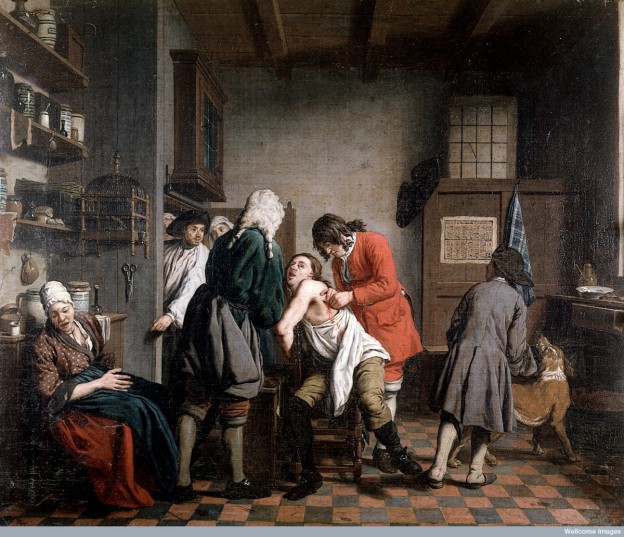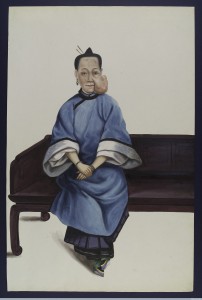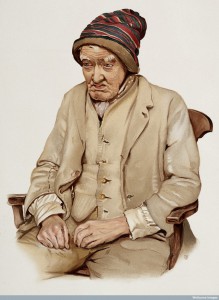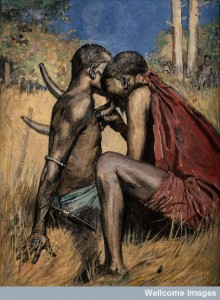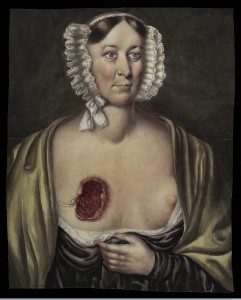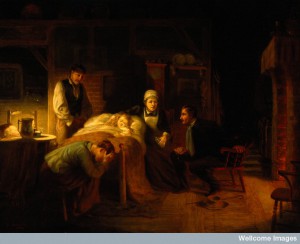
V0017575 “Anxious moments”: a sick child, its grieving parents, a nur
Credit: Wellcome Library, London. Wellcome Images
images@wellcome.ac.uk
http://wellcomeimages.org
“Anxious moments”: a sick child, its grieving parents, a nursemaid and a medical practitioner. Oil painting attributed to John Whitehead Walton, 1894.
By: John Whitehead WaltonPublished: –
Copyrighted work available under Creative Commons Attribution only licence CC BY 4.0 http://creativecommons.org/licenses/by/4.0/
The picture I chose is called “Anxious moments” it is an oil painting attributed to John Whitehead Walton from the year 1894. This painting depicts a scene of a sick child with her grief-stricken parents. A medical practitioner and a nursemaid are at the bedside.
This painting portrays mixed emotions. This painting takes place in the evening because there is a lamp at the bedside table and a glow from the door that looks like the sun is setting outside. The medical practitioner has rushed over and dropped his hat and cane on the floor. He is intent on assessing the child, while the parents are in obvious distress as they are trying to cope with the situation. The nursemaid has possibly given the child some medicine or water because she is holding a bottle while caressing the child and looking intently at the medical practitioner for further instructions. Based on the fact that this painting is from the 19th century, care is provided at home for children, I can assume that the family had no choice but to call the medical practitioner over to get the child checked. The mother is caring and cannot bear to look and see what could possibly be going wrong with her child. The father is patiently waiting and his expression is troubled and helpless, as he looks at the child in hopes that everything will be okay.
Focusing in on the child; she glows while her surroundings are dim. This gives the painting a feeling of innocence from the child. Her expression is peaceful and without any signs of distress. Despite the surroundings being so dark, looking solely at the child in the picture, it is uplifting. The child is neither suffering nor does it look like she has any form of severe illness.
The reason I found this particular painting striking is because it portrays the value of family and how medicine interacts with family ties. No matter how time goes on, whether it is the 19th century or the 21st century, the bond that families have will never change. Each individual in this picture represents the role that each title holds. When a child is sick, the entire family is involved with the healthcare providers. This compares to the imagery that we have discussed in class because it has a complimenting surroundings that reflect the central idea of the image. When we look at this painting we can see how colors, lighting, and facial expressions can give us so much meaning to the painting. It represents the knowledge and system of delivering care at the time the imagery was created. It speaks for itself as does the imagery we have discussed in class.
